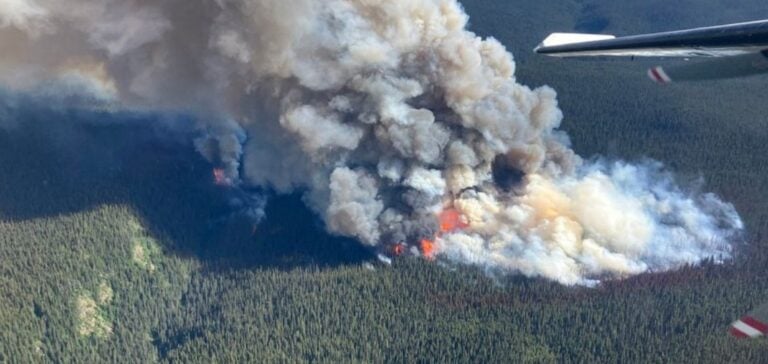The blaze threatening Fort McMurray, Alberta’s key oil town, has doubled in size in just 24 hours, exacerbated by high winds. This critical situation has necessitated the evacuation of over 6,000 residents, while the fire is getting dangerously close to within 4.5 km of the town. Fort McMurray, which was already severely affected by fires in 2016, is once again at the heart of a fierce battle against the flames.
Official response and financial support
In response to the emergency, the federal government, represented by Harjit Sajjan and Dan Vandal (Members of the House of Commons of Canada), has announced aid to combat these devastating fires. The announcement, made in the company of Manitoba’s Jamie Moses (Minister of Economic Development, Investment and Trade), underscores inter-provincial cooperation in natural disaster management. This financial support is crucial not only to combat current fires effectively, but also to prepare the region for possible future threats. Drought conditions make Canada particularly vulnerable to this type of event.
Economic and social impact
Fort McMurray is a nerve center for oil extraction. It contributes to the Canadian economy with over 3 million barrels of oil extracted daily. Forest fires therefore represent a threat not only to the safety of local residents, but also to the national economy. The authorities’ rapid response is designed to minimize the economic impact. It also aims to guarantee the safety of populations and the protection of critical infrastructures.
Future prospects and actions
While fire-fighting efforts continue, authorities remain vigilant as weather conditions can deteriorate rapidly. The government is determined to strengthen preventive measures and improve resource management to effectively combat forest fires, which are becoming increasingly frequent and intense as a result of climate change. This disaster is a reminder of the importance of adequate preparation and a coordinated response to natural disasters.
The fires in Fort McMurray highlight the vulnerability of communities to natural disasters. It also shows the need for swift, effective government action. Canada’s actions today are essential to protect lives, property and the country’s vital economic infrastructure.






















